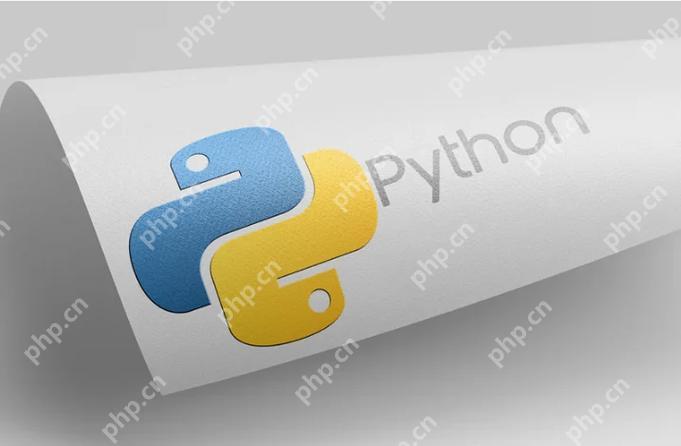在python中实现多线程同步可以通过使用threading.lock、threading.rlock、threading.condition和threading.Event等机制来实现。1) 使用threading.lock确保对共享资源的修改是线程安全的,避免数据竞争。2) threading.rlock允许同一个线程多次获取同一个锁,适用于递归或嵌套锁的情况。3) threading.condition用于实现生产者-消费者模式,确保线程间的通信和同步。4) 需要注意过度使用锁可能导致性能瓶颈和死锁问题,同时考虑python的全局解释器锁(gil)对多线程性能的影响。

在Python中实现多线程同步是处理并发编程中的一个关键任务。让我们从这个问题出发,深入探讨如何在Python中实现多线程同步,同时分享一些我在实际开发中的经验和心得。
在Python中,多线程同步的主要目的是确保多个线程在访问共享资源时不会产生冲突,从而避免数据竞争和死锁等问题。我在开发一个高并发的Web应用时,曾经遇到过由于线程同步问题导致的数据不一致,经过一番调试和优化,最终通过合理使用锁机制解决了这个问题。
Python提供了多种机制来实现多线程同步,其中最常用的包括threading.Lock、threading.RLock、threading.Condition和threading.Event。我个人在处理复杂的同步需求时,常常会结合使用这些工具来实现更精细的控制。
立即学习“Python免费学习笔记(深入)”;
让我们来看一个简单的例子,使用threading.Lock来实现多线程同步:
import threading import time class SharedResource: def __init__(self): self.value = 0 self.lock = threading.Lock() def increment(self): with self.lock: self.value += 1 time.sleep(0.1) # 模拟一些操作 print(f"Value incremented to {self.value}") def worker(shared_resource): for _ in range(5): shared_resource.increment() if __name__ == "__main__": shared_resource = SharedResource() threads = [] for i in range(2): t = threading.Thread(target=worker, args=(shared_resource,)) threads.append(t) t.start() for t in threads: t.join() print(f"Final value: {shared_resource.value}")
在这个例子中,我们使用threading.Lock来确保对共享资源value的修改是线程安全的。with语句的使用使得锁的获取和释放变得更加简洁和安全,避免了忘记释放锁的问题。
然而,锁并不是万能的。在实际应用中,我发现过度使用锁可能会导致性能瓶颈,特别是在高并发的情况下。一种解决方案是使用threading.RLock,它允许同一个线程多次获取同一个锁,这在递归调用或需要嵌套锁的情况下非常有用。
对于更复杂的同步需求,threading.Condition和threading.Event可以提供更灵活的控制。例如,在处理生产者-消费者模式时,threading.Condition可以用来实现线程间的通信和同步,确保生产者在生产数据时,消费者能够及时消费。
import threading import time import random class SharedQueue: def __init__(self): self.queue = [] self.condition = threading.Condition() def produce(self, item): with self.condition: self.queue.append(item) print(f"Produced {item}") self.condition.notify_all() def consume(self): with self.condition: while not self.queue: self.condition.wait() item = self.queue.pop(0) print(f"Consumed {item}") return item def producer(shared_queue): for i in range(5): time.sleep(random.random()) shared_queue.produce(i) def consumer(shared_queue): for _ in range(5): time.sleep(random.random()) shared_queue.consume() if __name__ == "__main__": shared_queue = SharedQueue() producer_thread = threading.Thread(target=producer, args=(shared_queue,)) consumer_thread = threading.Thread(target=consumer, args=(shared_queue,)) producer_thread.start() consumer_thread.start() producer_thread.join() consumer_thread.join()
在这个生产者-消费者模式的例子中,threading.Condition使得消费者可以在队列为空时等待,直到生产者生产出新的数据。
然而,使用这些同步机制时,也需要注意一些潜在的陷阱。例如,过度使用锁可能会导致死锁,特别是在多个锁交错使用的情况下。我在开发一个分布式系统时,曾遇到过由于锁顺序不一致导致的死锁问题,最终通过定义全局的锁获取顺序解决了这个问题。
此外,Python的全局解释器锁(GIL)在多线程编程中也需要特别注意。虽然GIL在单线程执行时保护了Python对象的安全性,但在多线程环境下,它可能会限制多核处理器的性能。在处理计算密集型任务时,我通常会考虑使用multiprocessing模块来绕过GIL的限制。
总之,在Python中实现多线程同步需要综合考虑各种同步机制和潜在的性能问题。通过合理使用锁、条件变量和事件等工具,可以有效地管理线程间的同步和通信。在实际开发中,结合具体的业务需求和性能要求,选择合适的同步策略是至关重要的。



















